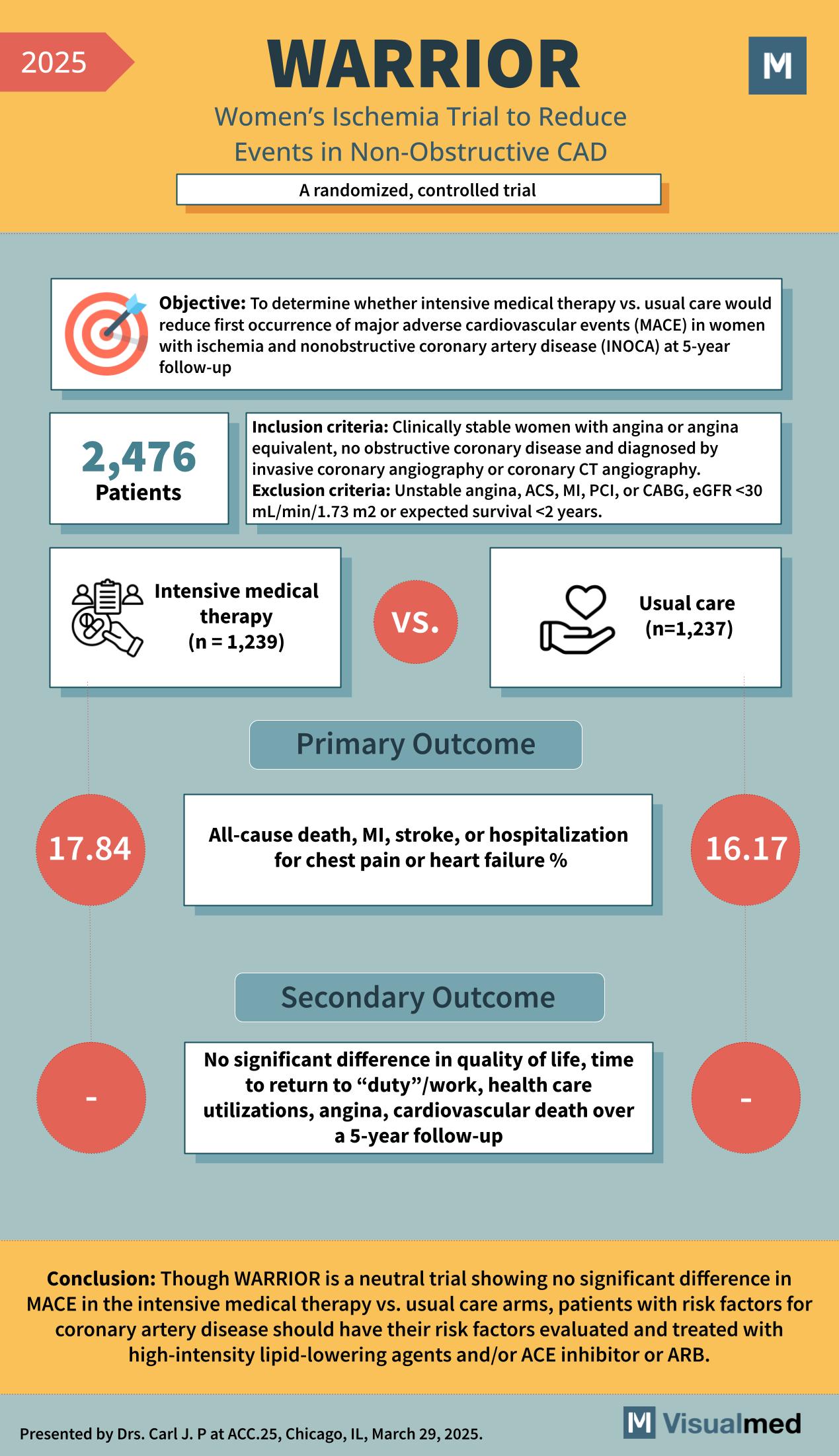
In the ever-evolving landscape of cardiovascular research, the WARRIOR trial—short for Women’s Ischemia Trial to Reduce Events in Non-Obstructive CAD—has emerged as a pivotal investigation into how best to treat women with ischemia and no obstructive coronary artery disease (INOCA). Presented at ACC.25 in Chicago, IL, this 2025 randomized, controlled trial sheds light on an often-overlooked population: women with symptoms of angina but no visible blockages on coronary imaging.
What Was the Purpose of the WARRIOR Trial?
The WARRIOR trial set out to determine whether intensive medical therapy could outperform usual care in reducing major adverse cardiovascular events (MACE) over a 5-year period. The focus was on a highly specific group: 2,476 clinically stable women diagnosed with INOCA through invasive angiography or coronary CT, but without obstructive coronary artery disease.
Inclusion & Exclusion Criteria
To be included, participants had to show angina or angina-equivalent symptoms but no obstructive coronary disease. Patients with unstable angina, prior myocardial infarction (MI), percutaneous coronary intervention (PCI), or coronary artery bypass grafting (CABG) were excluded. Also excluded were those with eGFR <30 or an expected survival of less than two years.
The Intervention
Participants were randomized into two groups:
- Intensive medical therapy group (n = 1,239): These patients received high-intensity risk factor management, including lipid-lowering agents and ACE inhibitors or ARBs.
- Usual care group (n = 1,237): Patients received care based on standard clinical practices without aggressive intervention.
Primary Outcome
The study’s primary endpoint—all-cause death, MI, stroke, or hospitalization for chest pain or heart failure—was measured at the 5-year mark:
- Intensive therapy group: 17.84%
- Usual care group: 16.17%
While the numbers suggest a slightly higher event rate in the intensive therapy group, the difference was not statistically significant, rendering the WARRIOR trial a neutral trial.
Secondary Outcomes
Secondary outcomes looked at quality of life, return to work, healthcare utilization, angina frequency, and cardiovascular death. Again, no significant differences were observed between the two groups.
What Does This Mean for Clinical Practice?
Despite being a neutral trial, the WARRIOR trial still provides valuable insights. While intensive medical therapy did not significantly outperform usual care in reducing MACE, the study reinforces the need for personalized care in women with INOCA. Importantly, the conclusion advocates for evaluating and managing risk factors using high-intensity lipid-lowering therapies and ACE inhibitors or ARBs when appropriate.
Final Thoughts
The WARRIOR trial highlights the complexities of treating non-obstructive coronary artery disease in women and challenges assumptions about “normal” angiograms. As research in cardiovascular health becomes increasingly sex-specific, WARRIOR stands as a reminder that treatment strategies must be nuanced, evidence-based, and patient-centered.